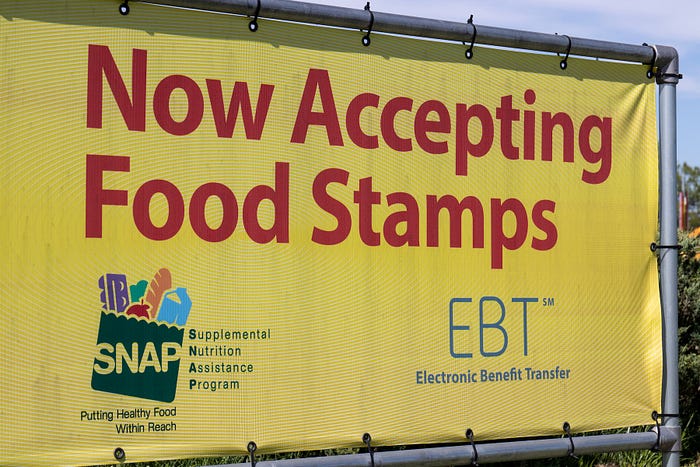Limited by Design: How Restrictive Asset Limits Punish Families and Perpetuate the Cycle of Poverty

Long before the COVID-19 pandemic piled new financial pressures on families across the United States, anti-poverty advocates circulated this sobering statistic: over a quarter of individuals or families could not pay for an emergency $400 expense without sacrificing other bill payments.
It is clear why limited cash reserves can complicate life for people experiencing poverty. Without a financial cushion, unexpected costs lead families to make less than ideal choices, like borrowing money at a high interest rate, which further impedes the possibility of building wealth. The conventional wisdom is that saving for emergencies is the right and responsible thing to do. The rules of our current public benefits system, however, prevent low-income families from building the savings they need to meet an unexpected expense or to plan for the future.
Policy advocates (and recently, some legislators) have voiced concerns about a related policy choice that, rather than helping to bolster savings and financial security, steers families away from building savings or making longer-term investments to improve their lives. The choice is to enact punishing ceilings — called asset limits or resource limits — that restrict families to a certain level of countable assets to remain eligible to participate in benefit programs. What assets are countable ranges by jurisdiction and benefits program, but can include anything from cash-on-hand savings accounts to a family vehicle to the value of a 401K retirement account.
Asset limits are part of a host of eligibility criteria for means-tested benefits such as the Supplemental Nutrition Assistance Program (SNAP) and Temporary Assistance for Needy Families (TANF). On top of strict income requirements, applicants must report savings and other assets to receive SNAP or TANF in the majority of states (28 for SNAP, 43 for TANF). Asset limits vary, but typically fall below $2,500; in five states, TANF requires that recipients have assets no greater than $1,000.
Consider these common scenarios: Your car requires brake or tire repair. You need to move, and the new apartment requires a security deposit plus first month’s rent. Your apartment or house flooded, and you need money for an emergency repair. Or, one of the most familiar examples: your child or spouse becomes ill and you miss a week’s pay to care for them, meaning your subsequent paycheck will be reduced. For each of these, a small sum in savings acts as a preventative measure to losing a job, losing stable housing, or losing a paycheck after caring for a loved one.
It is long past time to evaluate asset limit policies and their impact on families experiencing poverty. Leveraging data from recent state partnerships and the National Center for Children in Poverty’s (NCCP) experience modeling the impact of policy on families using its Family Resource Simulator (FRS), NCCP recommends a number of strategies that can remove benefit cliffs while encouraging or protecting savings for families in poverty. Government agencies can implement policies to significantly increase the asset allowance per family, modify the types of assets captured in the asset limit calculus, or eliminate asset tests entirely. The Biden Administration, through Build Back Better legislation, is proposing to raise asset limits for some federal programs. More assertively, the New York State Senate recently introduced a bill calling for the total elimination of asset limits under all public benefit programs.
Below are specific policy recommendations for reform, some of which have already been successfully implemented in some states, and many of which can be implemented vis-a-vis administrative rule changes at the State level versus lengthy legislative battles.
Remove or substantially increase asset limits: Highly restrictive asset limits in many states’ SNAP and TANF programs contrast sharply with other programs, like Child Care and Development Fund (CCDF) subsidies, (i.e., child care subsidies) with very high asset limits, or Medicaid programs, with no asset limits for most income-eligible adults. NCCP recommends significantly increasing or altogether eliminating asset limits for at least SNAP and TANF, as well as all other programs that aim to support low-income families.
Expand types of assets that are exempt: Federal and state laws currently exempt some savings accounts from SNAP and TANF asset tests, but key gaps remain. For example, most states count savings in IRA retirement accounts toward asset limits. Medical or dependent care flexible spending accounts (FSAs) — accounts designed to set aside pre-tax earnings for medical expenses or child care — are counted toward asset limits for TANF in some states. While the value of one’s home is typically excluded from both SNAP and TANF asset tests, savings accounts for the purchase of a future home are not. Savings for basic living expenses, such as a home purchase, retirement, or child care, should be exempt from asset limits.
Expand the availability of exempt savings accounts: Medical and dependent care FSAs are only available to families who are lucky enough to work for employers who offer them. State or federal governments should set up accounts, designated for these qualifying purchases, to exempt such accounts from asset tests. These accounts would function similarly to ABLE accounts, which allow people with certain disabilities to accrue savings while remaining eligible for SSI.
Critics of relaxing or categorically removing asset limits claim that this action will reinforce dependency on public benefits. Evidence suggests this is not the case — following the elimination of asset tests for TANF participation in Virginia, Louisiana, and Ohio in the early to mid 2000s, all three states saw declines or no change in participation. Moreover, governments have seen significant cost savings when making these shifts via reducing the administrative burden of annually assessing participating families’ assets.
Relaxed or eliminated asset limits also reduce churn — the possibility of going on and off public benefits over time. Re-enrolling in benefit programs adds a layer of stress to a process already imbued with uncertainty: families must resubmit complicated applications and expect delays in payment as their paperwork is processed.
At NCCP, we envision a future where public benefits facilitate stability in the near-term and economic mobility in the long-term. Developing and implementing policies that encourage investments — meeting needs in the short- and long-term — can help end the cycle of poverty.
By Heather Koball, Co-Director, National Center for Children in Poverty, and Maggie Cely, Manager of Institutional Giving, Bank Street College. Contributions from Seth Hartig, Senior Research Associate, National Center for Children in Poverty.
For over 30 years, the National Center for Children in Poverty — known widely as NCCP — has conducted original research and program evaluation to improve the lives of children and families experiencing poverty, and translates those results for advocates to influence changes in policy. NCCP works across sectors, focusing on those that have the most interaction with children and families: early childhood education, paid family leave, physical and mental health, and of course, public benefits.
